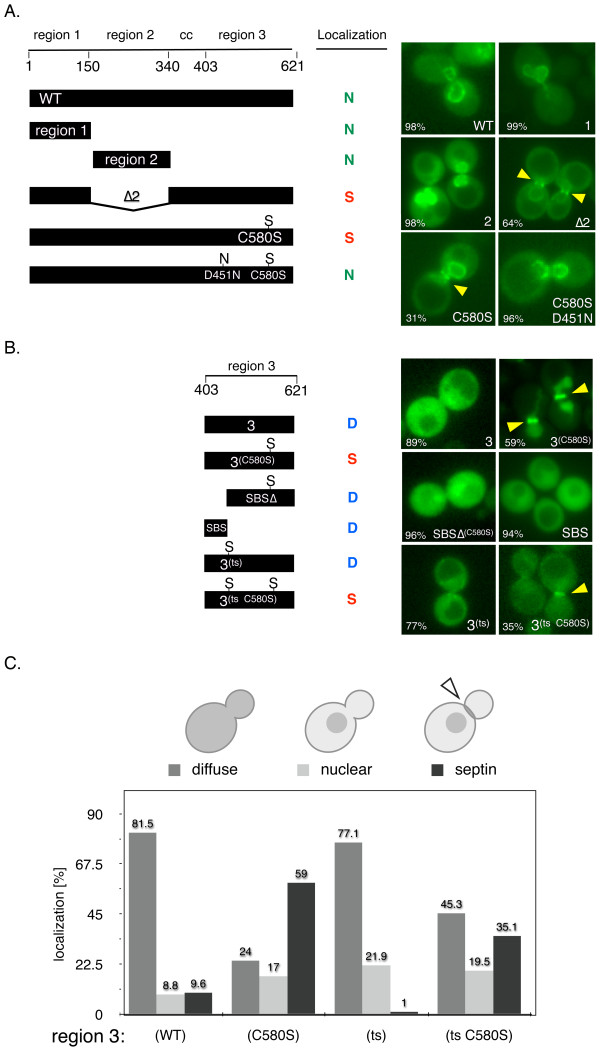Figure 3.
Distinct and separate Ulp1 domains are required for localization to the septin ring. (A) and (B) Left: A schematic of Ulp1 deletion and truncation mutants used in this study is shown. The length of each construct (amino acid scale 1 to 621), the individual domains of Ulp1 and pertinent amino acid changes are shown. WT: full-length Ulp1; region 1: Ulp1(1 to 150); region 2: Ulp1(151 to 340); region 3: Ulp1(341 to 621); Δ2: Ulp1 lacking region 2; C580S: catalytically inactivating mutation; D451N: deleted salt bridge with small ubiquitin-like modifier (SUMO) (YOK 1611, YOK 1474, YOK 1490, YOK 1861, YOK 1479, YOK 2016, YOK 1839, YOK 1907, YOK 1903, YOK 2203, YOK 1828 and YOK 2157). Colored letters N, S and D summarize the observed nuclear, septin and diffuse localization of the indicated constructs, respectively. SBS corresponds to a shallow SUMO-binding surface on Ulp1 [31,57,58]. Right: Representative images of G2/M-arrested cells expressing the GFP-tagged Ulp1 constructs shown on the left. The arrowheads indicate the fraction of cells (%) with N, S or D localization and the presence and position of septin ring-localized Ulp1 constructs. (C) Quantification of distinct subcellular localization of wild-type and mutant Ulp1 region 3 constructs. Large-budded G2/M-arrested cells were imaged to assess diffuse, nuclear or septin ring localization (n > 100).

